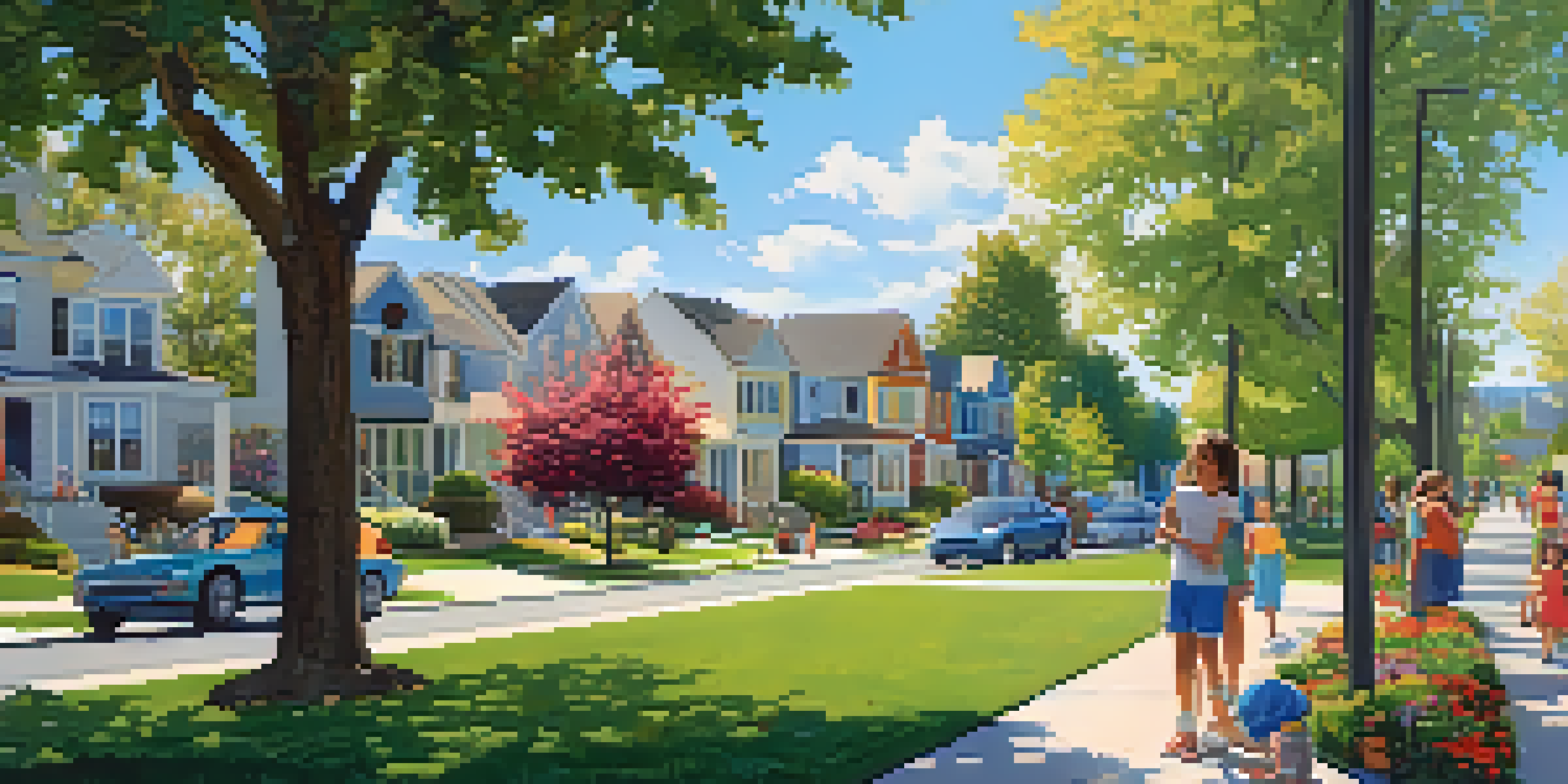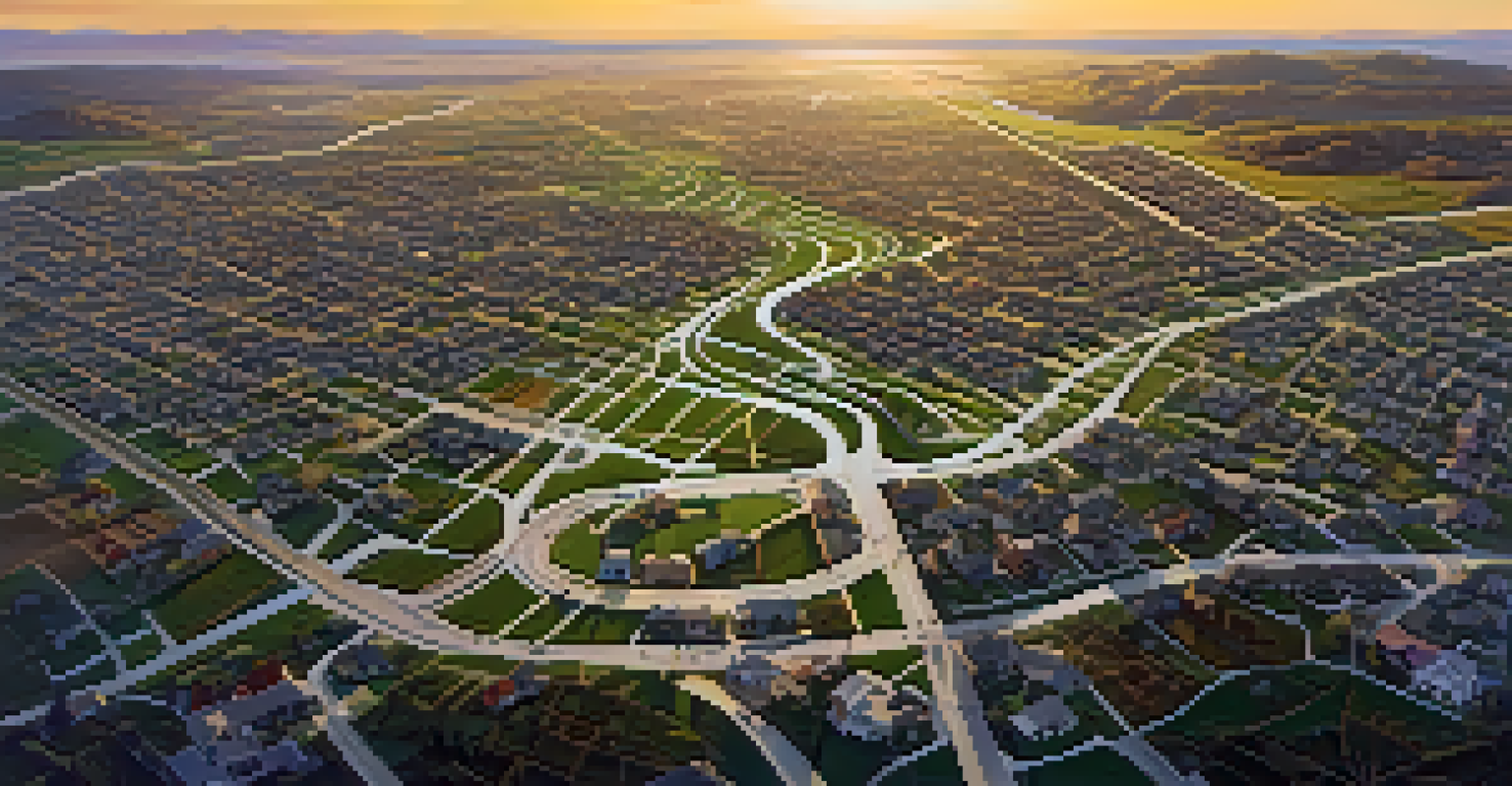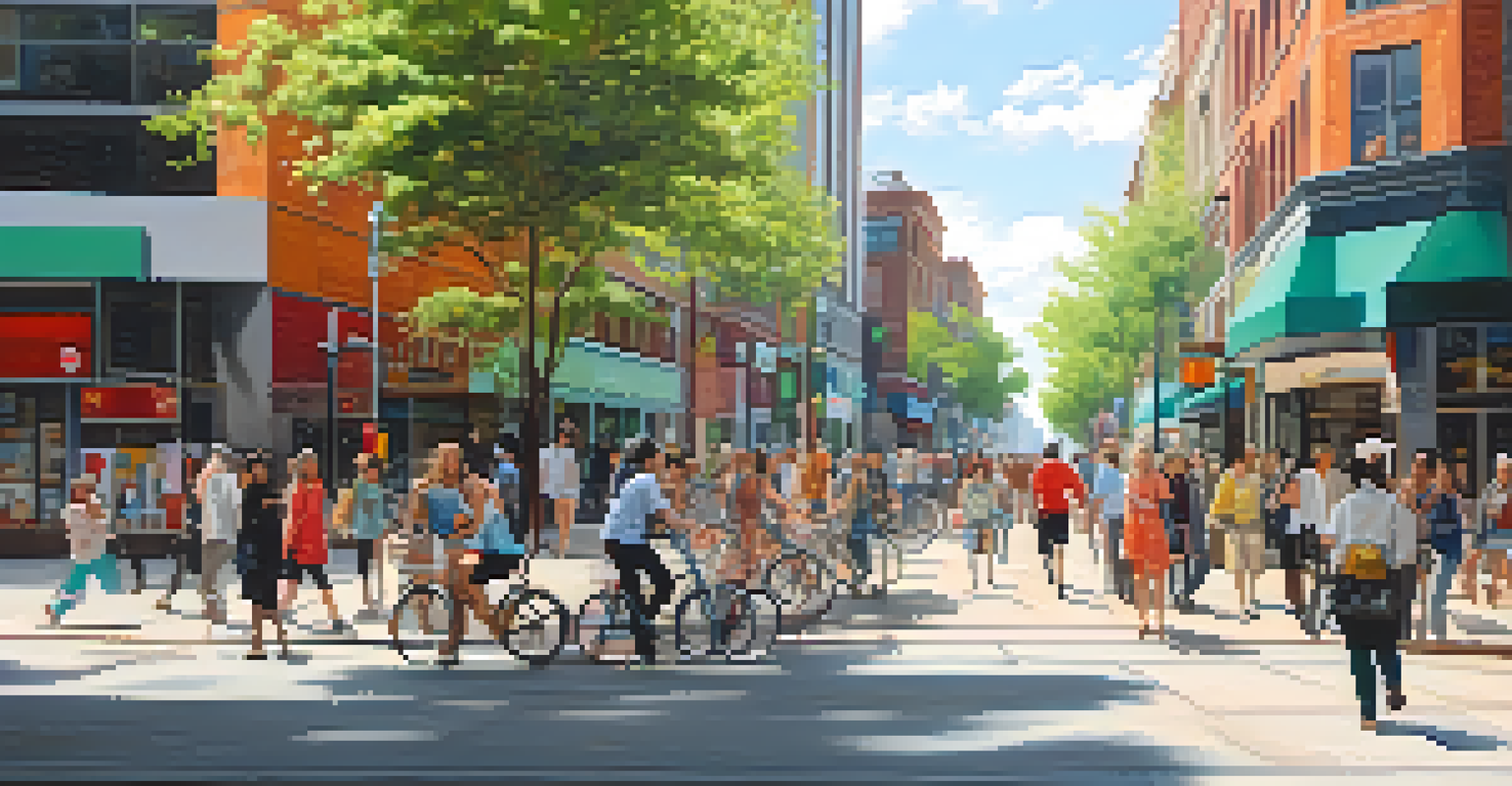Analyzing the Effect of Urban Sprawl on Real Estate Trends

Understanding Urban Sprawl and Its Characteristics
Urban sprawl refers to the uncontrolled expansion of urban areas into the surrounding rural land. It often leads to the development of low-density suburbs, which can create a patchwork of residential, commercial, and industrial zones. This growth is usually driven by factors like population increase and the desire for more affordable housing options.
Urban sprawl is a symptom of the way we live today, but if we continue to pour our resources into it, we’re going to lose what we love about our cities.
One of the key characteristics of urban sprawl is the reliance on automobiles, as communities become more spread out. This can result in longer commutes, increased traffic congestion, and a greater environmental impact due to higher emissions. Additionally, infrastructure development often struggles to keep pace with the rapid growth, leading to challenges in public services and amenities.
As cities expand outward, they often consume agricultural land and natural habitats, raising concerns about sustainability. Urban sprawl can also create social divides, as wealthier individuals may move to these new suburban developments, leaving behind less affluent communities in the urban core. Understanding these dynamics is crucial for analyzing their impact on real estate trends.
How Urban Sprawl Influences Housing Demand
Urban sprawl significantly affects housing demand by shifting preferences toward larger homes in suburban areas. Many families seek the space and perceived safety that these developments offer, often at a lower price point compared to urban centers. This has led to a surge in demand for single-family homes, which often drives up prices and competition in these regions.

However, this trend can lead to a decline in demand for urban properties, especially those that are smaller or older. As more people flock to the suburbs, urban areas may struggle to fill vacancies, which can negatively impact property values and rental prices. This shift not only reflects changing consumer preferences but also highlights the need for cities to adapt to these evolving demands.
Urban Sprawl Drives Housing Demand
The shift towards suburban living increases demand for larger homes, impacting urban property values.
Moreover, the influx of residents into suburban areas can strain local resources and infrastructure. Schools, parks, and public transport systems may become overcrowded, prompting local governments to invest in expansions and improvements. This dynamic illustrates the complex relationship between urban sprawl and housing demand, shaping the real estate landscape.
The Role of Infrastructure in Sprawling Developments
Infrastructure plays a vital role in shaping urban sprawl and its impact on real estate trends. As new developments arise, the need for roads, utilities, and public services increases, often dictating where growth occurs. Well-planned infrastructure can create attractive neighborhoods, promoting further investment and development in those areas.
The best way to predict the future is to create it.
Conversely, inadequate infrastructure can hinder growth and lead to disjointed communities. In regions where transportation options are limited, residents may find themselves reliant on cars, which can detract from the appeal of certain areas. This underscores the importance of strategic planning to ensure that infrastructure keeps pace with urban sprawl.
Consequently, real estate developers must consider infrastructure when assessing land for new projects. Areas with robust infrastructure are likely to attract more buyers and investors, while those lacking essential services may struggle to thrive. This relationship between infrastructure and urban sprawl ultimately influences market trends and investment opportunities.
Environmental Impacts of Urban Sprawl on Real Estate
The environmental consequences of urban sprawl are significant and can dramatically affect real estate trends. As urban areas expand, they often encroach on natural habitats, leading to loss of biodiversity and increased pollution. This environmental degradation can deter potential buyers who prioritize sustainability and outdoor spaces.
Moreover, urban sprawl contributes to increased traffic congestion and air pollution, which can harm the quality of life for residents. Areas with high pollution levels may see a decline in property values, as homebuyers often seek cleaner, greener environments. This can create a feedback loop where declining property values further exacerbate environmental issues.
Infrastructure Shapes Growth Patterns
Well-planned infrastructure is crucial for supporting urban sprawl and attracting real estate investment.
Developers are increasingly recognizing the importance of incorporating green spaces and sustainable practices into their projects. This shift not only addresses environmental concerns but also appeals to a growing market of eco-conscious buyers. As awareness of environmental issues continues to rise, the interplay between urban sprawl and real estate trends will become even more critical.
Socioeconomic Factors Driving Urban Sprawl
Several socioeconomic factors contribute to urban sprawl, shaping real estate trends along the way. One major driver is the search for affordable housing; as urban centers become more expensive, families often look to the suburbs for better prices and larger homes. This migration can create disparities between urban and suburban areas, impacting investment decisions and property values.
Additionally, economic growth and job opportunities in suburban areas can fuel further expansion. As businesses relocate or establish operations outside city centers, they attract workers who seek housing nearby. This trend can lead to a surge in demand for real estate in these regions, influencing market dynamics and pricing.
However, urban sprawl can also lead to challenges for lower-income residents who may find themselves priced out of suburban developments. As demand increases, housing options become scarce, exacerbating the affordability crisis. Understanding these socioeconomic factors is essential for comprehensively analyzing the impact of urban sprawl on real estate trends.
Urban Sprawl and Real Estate Investment Opportunities
Urban sprawl creates a unique landscape for real estate investment opportunities. Investors often find potential in developing suburban areas, where land is more affordable and demand for housing continues to grow. This trend can lead to lucrative returns, particularly for those who can identify up-and-coming neighborhoods before they become mainstream.
However, investing in areas affected by urban sprawl requires careful consideration of market trends and local dynamics. Investors should assess infrastructure developments, zoning regulations, and community plans to understand the long-term viability of their investments. This knowledge can help mitigate risks associated with fluctuating property values and changing buyer preferences.
Environmental Concerns Affect Buyers
The environmental impacts of urban sprawl, such as pollution and habitat loss, can deter potential buyers.
Additionally, the growing focus on sustainability presents new opportunities for investors. Properties that incorporate eco-friendly features or are located near green spaces may attract more buyers, creating a competitive edge in the market. By staying informed and adaptable, investors can navigate the complexities of urban sprawl and capitalize on emerging real estate trends.
Future Trends: Urban Sprawl and Smart Growth Initiatives
As urban sprawl continues to shape real estate trends, communities are increasingly adopting smart growth initiatives. These strategies focus on sustainable development practices that prioritize density, mixed-use areas, and efficient public transportation. By encouraging growth within existing urban areas, smart growth aims to minimize the environmental impacts associated with sprawl.
This shift toward smart growth also reflects changing consumer preferences, with many buyers seeking walkable neighborhoods and access to amenities. Developers who align their projects with these trends are likely to attract interest and investment. This approach not only benefits the environment but also enhances the quality of life for residents.

Looking ahead, the relationship between urban sprawl and real estate will continue to evolve. As cities grapple with the consequences of uncontrolled growth, the emphasis on sustainable practices and community-focused planning will become increasingly important. By embracing these trends, stakeholders can create more resilient and vibrant urban environments.